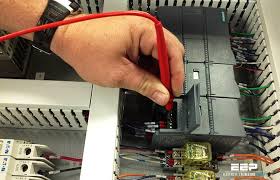PLC Installation operation and Troubleshooting

Course objectives
· Instruct trainees on how to successfully integrate a PLC into actual day-to-day processes. It not only deals with the PLC hardware and software, but all the surrounding systems that must be compatible to achieve a safe and reliable PLC control system.
· Applies to all PLC types and manufacturers. As well as helping trainees keep abreast of the latest technologies and techniques available in this area, this tutorial offers an excellent opportunity for delegates to ask specific questions and exchange ideas relating to their own applications
Course outlines
· Introduction
· PLC Hardware Configuration
· CPU sizes and types
· Backplanes
· Power supplies
· module types
· Installation and Wiring Considerations
· Power and grounding
· Enclosures
· Input devices and wiring methods
· output devices and wiring methods
· Commissioning
· Safety Issues and Techniques
· Solid state switching
· E-Stops
· Power-up delays
· Equipment re-starting
· Watchdog circuits
· MCR circuits
· PLC Numbering Systems
· PLC Programming
· Interactive Discussion
· Programming Software
· Program functions
· Program keying and development
· Connecting to the PLC
· PLC Set-up
· Program downloading
· Monitoring and diagnostics
· Structured Programming
· PLC Programming
· Documentation Strategies
· PLC Troubleshooting
· operator Interfaces
· Data Acquisition
Who Can Benefit?
· Engineering and design personnel
· Maintenance and technical services personnel
· Process and operations personnel
· Technical and process managers
· Engineering and design personnel
· Electrical consulting engineers
· Electrical contractors




